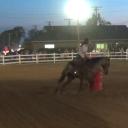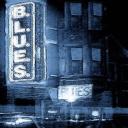Yahoo Answers is shutting down on May 4th, 2021 (Eastern Time) and the Yahoo Answers website is now in read-only mode. There will be no changes to other Yahoo properties or services, or your Yahoo account. You can find more information about the Yahoo Answers shutdown and how to download your data on this help page.
Trending News
Supplements for horse with hooves that crack? (2 part question)?
So inside my mares hooves they often peel, and she used to have really weak hooves before I got her so shes prone to hoof problems. She cracked her hoof twice since I owned her (1 and a half years) and I was wondering would it be good to put her on a biotin supplement because I cannot come out everyday to put on a hoof conditioner and such till summer showing season when Im out almost everyday. Also would biotin supplements help grow a mane and tail? If not what could? I was hoping the biotin could help with her mane and tail too so I wouldnt have her on a whole load of things.
Shes also prone to thrush so we are trying to strengthen her hooves as much as possible so we arent thrown off track too much.
Her stall is completely dry and matted, but she gets turned out everyday and sometimes in mud. But lately its been dry and the crack in her sole has finally closed up!
9 Answers
- ?Lv 48 years agoFavorite Answer
In a perfect world, a good diet would produce a horse with healthy coat, hooves...everything. Unfortunately, just like people, some horses have "weak" points. This doesn't always mean that you are not feeding correctly, it might just mean that your horse needs a little extra help, like a lot of people do.
My suggestion is a good Biotin supplement, like Farrier's Formula Double Strength. I've used it before and it seemed to work well with both hoof and hair coat. In addition, you can use a topical solution called Farrier's Fix Hoof Oil. It's specifically make to help strengthen and harden the hoof. Good for horses with sore feet. You paint it on the sole of the hoof, and you can even use it on the outside of the hoof to help with nail holes that split or crack from shoeing. I used this on my mare 3 times per week, and my farrier has definitely seen a difference in her feet. She doesn't split or crack and it's a lot easier to keep shoes on her.
Additionally, you want to make sure that the diet she is on is generally good. Good hay and possibly a good supplemental grain formula; I prefer Safe Choice. It's not super fatty, and it provides a good base to mix in supplements. Also, make sure that for the thrush that your horse is in as dry a place as possible and that you clean her hooves on a daily basis. I always cold hose my horses legs after every ride and during that time, I use the hose to "wash" the insides of her hoof. This keeps them free of any debris. Then I let them dry and used the hoof oil. Good luck!
- ?Lv 58 years ago
From the sound of your question, I would say that neither you nor your hoof care provider really understand how to properly manage your horse's hooves.
What I would suggest is trying a different farrier/trimmer. A competent farrier will trim your horse accordingly - meaning whether the horse is to be left barefoot or shod. No need to pay crazy high prices for a "barefoot" trim. A proper trim is a proper trim depending on the horse and the situation. And, if your horse should require shoes for some reason, a qualified farrier will be able to do that for you.
You are concerned about the "inside of the hooves peeling" and the "sole cracking". Are you aware that the sole does shed and does appear to "crack? The peeling sounds like normal shedding of the sole.
If the walls are cracking, they are being left too long between trims. This is nature's way of self trimming when we, as caretakers, aren't helping the horse with proper/timely hoof care.
Thrush can gain and maintain a stronghold if the foot/frog isn't kept trimmed. Cracks and crevices just provide hiding places for the bacteria to thrive. A lot of horses live in muddy conditions and don't have a thrush problem.
As for growing mane and tail, that is mostly genetics. Don't be overly aggressive with the grooming so you aren't constantly pulling out hair.
- longshotsbluesLv 78 years ago
Prone to thrush?
No such thing if the stall is always cleaned daily. You can't leave the horse with hooves like this because you can't get out there. Where ever the horse is stabled for winter can they not simply put conditioner on once daily? Hooves crack because they are too dry and winter only makes the condition worse. Add flax seed oil to feed but those hooves must be conditioned more then once a week. Hope your giving good vitamins daily like Red Cell. Sounds like the horse wasn't taken care of nutritionally prior to you getting her.
Honestly if she's not standing in WET all the time she shouldn't be getting thrush. But if or when she gets it make sure you use No Thrush. It is a great product. Some people don't treat the feet long enough. I know one thing you'll always be able to smell thrush before you ever see it.
Boarding places lie like hell, will tell you they are being turned out when they're not EVEN IF YOU KNOW THEM.
Nolvasan will heal cracked heels the fastest. We used this at the race track for years. Also great product.
~ Sorry Bliss but your wrong. I've been a Thoroughbred Groom since I was 19, I'm now 55. Retired. I took care of many of feet, legs, whole horse in my career.
- ?Lv 58 years ago
I would say Hoof Pep, it's generally pretty good! Also take all her shoes off, this just weakens the feet more.
You may disagree but from personal experience barefoot trimming works extremely well for horses with crack prone hoofs. It's a little more expensive that just trimming but it's definitely better. They take the whole wall off of the hoof, rounding the toe and edges, therefore it's hard for cracks to come through. I've recommended my own barefoot farrier to 4 people with crack and hoof problem horses and he's done a fabulous job with all of their hoofs. You should give it a go, find a well known one in your area.
You could try boots for the paddock for a while to let them strengthen, this will stop them getting so wet. Just make sure you clean the boots daily and remove them for at least an hour a day!!
- ?Lv 68 years ago
@ gallop, thank you for the detailed info on forms of iron. I'd seen Farrier's Formula get negative reviews because of the iron content. I'll bring this up to the gang on the barefoothorsecare yahoo group.
ETA:
You said the inside of your horse's hooves peel. If it's the sole coming off, that's a good thing. It is supposed to exfoliate. Impacted soles can cause trouble. You can use a hoof pick to scratch it off, but don't ever cut into the sole and don't let your farrier pare away live sole. You can tell the difference between live sole and dead, exfoliating sole because A. Live sole doesn't come off on its own and B. the dead sole has a different texture. 'Flaking' isn't the usual description unless the horse has been shod for too long and not ridden on rough terrain, so the sole has not been able to shed normally. The usual texture of dead sole is rather chalky and you can easily scratch it. If it's white, you can see dirt cracks throughout it. When you've scratched down to live sole, it has a rather waxy appearance, and somewhat yellowish if it's white. There are no dirt lines in live sole. You can use a steel wire brush to remove it, too. Use care on the softer frog, of course.
Yes, thrush is possible in horses that live in immaculately clean pastures, and moreso those in stalls, however clean and dry they may be.
I would not try to hold up racehorses as examples of equine hoof, physical or mental health. They're constitutionally delicate and physically, psychologically, and nutritionally abused from their yearling year onward, sometimes to the early end of their lives. Living in cages, eating excessive amounts of high-powered feed, limited forage, no equine social interaction, drugs, constant shoeing from an early age - all these routine practices have negative impact on equine health, including feeding Red Cell.
**********************
Topical 'treatments' are useless. They are only good for making humans feel like they're doing something, and of course to make money for their manufacturers.
Iron overload is rampant in horses, yet many supplements contain added iron. Read labels. Iron competes with zinc and copper, which are vital to a strong immune system which can fight off thrush as well as scratches, rain rot, and other diseases. Even a lot of hoof supplements have iron in them, making them bad for hooves and general health.
I've heard a lot of good things about California Trace, from horse owners all around the world, not just in California. It's high in zinc and copper and has no added iron. Horses that used to get 'sunburned' in summer keep their glossy, dark/bright springtime coats and chronic issues like thrush clear up easily.
If she's currently shod, consider having the shoes pulled and providing her with boots for protection until she has transitioned to strong, healthy bare hooves. It takes some time and effort, but when your horse gallops across gravel barefoot and her hooves are short and solid and strong, you'll be glad you made that choice for her. You can find a barefoot trimmer in your area by joining the group barefoothorsecare@yahoogroups.com
As long as shoes are in place, the trim is not correct, and the sugar content and mineral balance of the diet is off, it's going to be very hard to rehabilitate her feet.
Other points in favor of booting are:
Hoof boots protect the hoof wall and sole, not just the rim where the wall bears weight.
They can have pads added to increase stimulation of the sole, frog or both, as needed.
They allow the whole foot to bear weight as nature intended. Shoes force the laminae to bear the whole burden of holding the coffin bone, leg, and horse off the ground. This is called peripheral loading and it's a very unhealthy situation.
They allow the hoof to flex and function properly, to absorb concussion, promote circulation, and fight off thrush infection.
Every horse has its genetic set point for mane and tail length and thickness. You can make the most of this with a well-balanced diet and careful treatment of the hair. Use a body brush instead of any kind of comb or curry, to prevent pulling out or breaking off the hairs. I worked for a Morgan show stable that had me dip each horse's tail in a bucket of cold water each day. Did it help? I have no idea. I only worked there a month before the trainer's nasty treatment of the horses made me quit.
s
- 8 years ago
A healthy horse on a healthy diet shouldn't need biotin supplements or any other.
Check your feed.Try something else.Talk with a farmer who has work horses.
Are the conditions of her stabling/pasture wet or damp a good deal of the time?
Thrush is caused from dirt and damp/long bouts of wet conditions.
Clean her feet more often.
Be aware that too much "product" of any kind can promote problems.
She may be genetically pre-dispositioned to the problem and will require more attention to her feet and a good vet to advise you on care.
Lastly: Some horses just don't grow long luxurious manes and tails.....no matter what you do.
- Anonymous5 years ago
My farrier said to stay away from hooflex, rain maker, etc conditioners, because most of them have petrolium (spelling?) which actually dry the hoof out. He recommended biotin additive as well as 1/2c corn oil. 2 weeks into adding this to their diet, I noticed a change in their hooves. One of my paints is a rescue and had his hooves trimmed waaaay too short. The biotin helped in growing the hooves out faster and the corn oil hardened them up nice. It also has made a positive difference in his coat :D I mix both of those in with a 3/4 scoop of grain.
- gallopLv 78 years ago
Biotin is a B vitamin that can be safely supplemented whether or not a deficiency exists since whatever is not used is harmlessly excreted in the urine. The structural integrity of hooves has been shown to improve in valid clinical trials when biotin is administered to horses.
Anything that benefits hoof integrity will also benefit skin and hair integrity. Providing a well balanced diet of quality forage and if needed, additional concentrated feed or ration balancer is the best way to meet your horse's nutritional needs. Sometimes horses are fed diets lacking quality protein with the right amino acid profile. Farriers Formula is a supplement formulated for hooves that contains the right amino acids and also provides supplemental biotin, and it can be fed in addition to your horse's forage to provide extra quality protein that may be lacking in the forage.
You should not use any topical products on the hooves. Numerous scientifically valid studies and extensive research on hoof structure at the cellular level have repeatedly proven that these products are of no benefit, and when the structural integrity of the hooves is compromised, they are all harmful.
Horses ideally need continual exercise on medium ground surface with flexible barefoot hooves to provide optimum circulation and tissue perfusion within the hooves. Shunting systems in the blood vessels of understimulated hooves will byspass blood past tissues so they don't receive adequate oxygen, immune cells, and nutrients via the blood and lymph, and so that metabolic wastes are allowed to accumulate in the tissues instead of being efficiently removed by well circulated blood and lymph reaching well perfused hoof tissues.
So, providing the right nutrient balance does no good if the nutrients never reach the tissues where they are needed, and the only way that can happen is by providing for ample exercise on flexible hooves in consistent contact with medium ground surface. Pea gravel has also been shown to provide a beneficial ground surface to maintain or rehabilitate hooves.
The majority of cracks in hooves occur from the inside out because of mechanical leverage forces on the walls resulting from badly balanced trims and/or shoeing and/or allowing hooves to become overgrown between trims.
Use of hardeners such as Keratex on the hooves has been shown to overly restrict flexibility of the hoof capsule so that it can't move with the inner living tissues. This results in separation of tissues of the inner foot from their attachment to the outer capsule, similar to what happens in laminitis. The rigidity of the hoof capsule also can't accommodate hoof expansion so that tiny microscopic fractures in the walls and soles result from the overhardening, which weakens hoof structure and destroys the barrier to invasion by microorganisms into the living foot.
*************************
Add................. Not all iron from dietary sources is the same, and most iron consumed by horses is never absorbed from the intestinal tract. Heme iron from animal sources is the most readily absorbable form of iron, and non-heme iron from plant sources is the least absorbable form. Iron oxide is very poorly absorbed, while ferrous sulfate is very readily absorbed.
The iron content in Farrier's Formula is non-heme iron oxide which is a form of iron that remains virtually unabsorbed from the intestine of a horse, and is collected by specialized enterocytes of the intestinal walls that engorge with iron until they drop off to be excreted in the manure.
Heme iron found in animal sources is the most absorbable form of iron, which is why supplementing horses with animal-derived heme iron such as the iron found in a product like Red Cell poses the risk of iron overload, while the iron oxide in many soils and feeds poses little to no risk of overage.
Source(s): Registered Nurse and 59 years with horses - 8 years ago
horseshoers secret is a supplement that you add to your horses feed and you can use hoof conditioner also on their frog once a week will make a difference.










